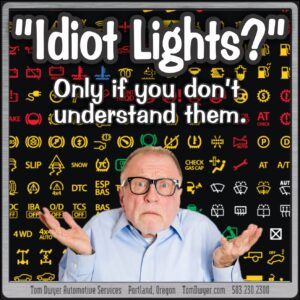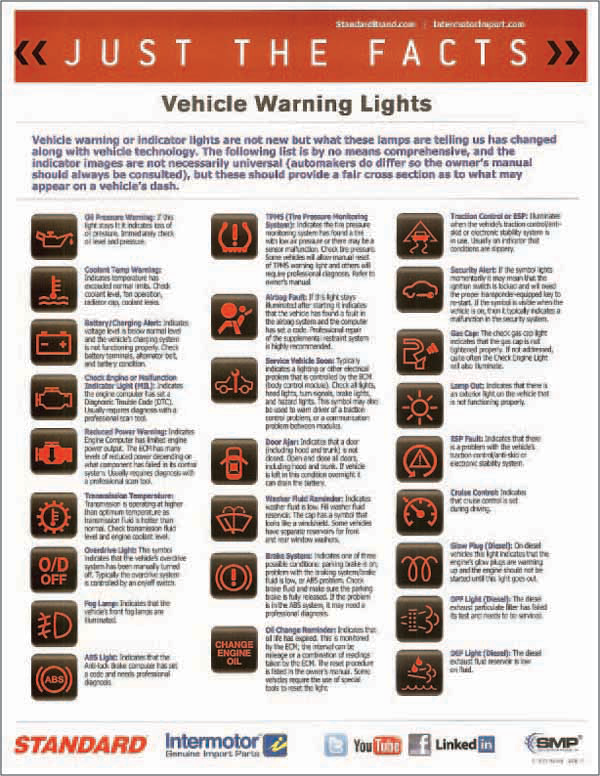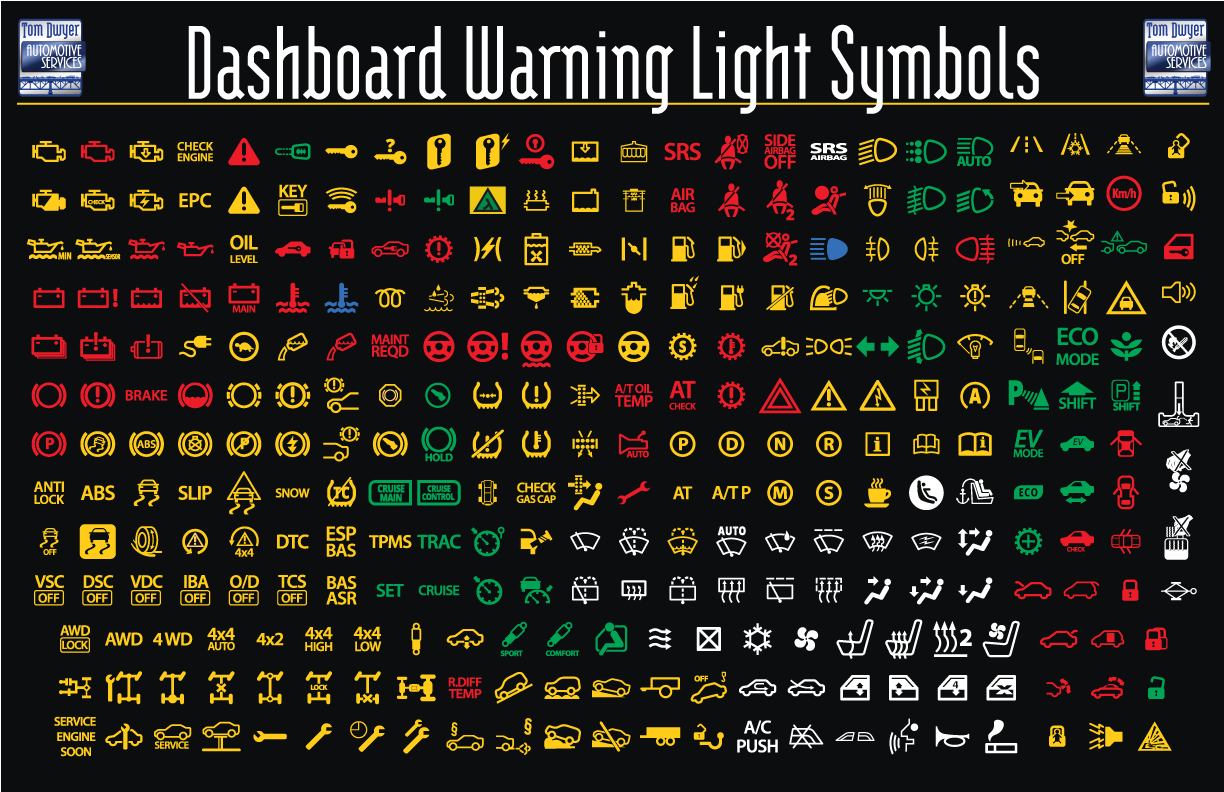Posted on July 11, 2013, updated Feb 2022
Some people call them “idiot lights” but they’re more properly called “dashboard warning lights”… they’re the Christmas Tree display of lights that come on every time you start your car. If everything’s running fine then you never see them, but what does it mean when one comes on? What do you do? Do you ignore it, keep driving, or call for a tow? Is it something that can be solved by tightening your gas cap, or does it mean an expensive trip to the shop? Well, buckle in (which usually turns the seatbelt light off) as we take you on a tour of your vehicle warning lights, and give you our best advice on how to handle them…
Just like every other system on modern vehicles, your dash lights have evolved over time. Early cars didn’t have dash lights at all, just head, side, and tail lights. From the 40’s to the 60’s manufacturers added lights to the dashboard to illuminate analog dials, but it wasn’t until the introduction of LED lights in the 70’s and 80’s that the lights themselves started to be used to convey critical information. Now dash lights are your primary source of real-time information for almost every vehicle system.
Before even getting to the symbols, you can learn a lot from the color and pattern of the indicator. Red is normally for emergency situations or a critical failure, Yellow and Orange are for cautionary and non-critical information, and Green and Blue lights tell you everything is working fine. Blinking lights are generally more important than solid ones. For example, if your “check engine” light is on solidly, you can probably keep driving (but get it checked soon). If it’s blinking you should STOP DRIVING and get it checked as soon as possible. A flashing check engine light is serious business!
There are no standardized icons for warning icons, so each manufacturer is left to develop their own. Some icons are very distinctive to a particular manufacturer or vehicle model, while others are becoming more common between manufacturers. You have to READ YOUR OWNERS MANUAL TO FIND OUT WHAT THE LIGHTS ON YOUR DASHBOARD MEAN!
Of course there are sources to give you some general guidance as well. Believe it or not, there’s a website called DashboardSymbols.com that’s dedicated to all the details of the subject. They have pages for picture symbols, text symbols, icon acronyms, and combo symbols. (It’s not strictly related to dashboard symbols, but they also have a page for dead key fobs that will get you into your car when the battery on your key fob has died.) They also have a very useful downloadable app to tell you the meanings of all your warning icons for any particular car. If you download it now, you’ll be ready for any emergency light without having to rifle through the glove box for your coffee-stained owner’s manual.
We’ll close with one final thing that can help you out… the sheet at right shows the 25 most common warning icons with a little info to help you out when they come on. You can print a copy to stick in your glove compartment, or make flashcards of the icons to get your child ready for the driving world. Arm yourself with information, and enjoy your drive! (Until one of these lights comes on!)
Update 12/19/13- If you’ve read this far, then you may also appreciate this article from Jalopnik on “The 10 Most Confusing Car Buttons and Symbols- And What They Mean“. Ever wondered what the “Party Mode” switch does on a 4Runner? Here’s how to find out.
Update 2/21/22- Our new update for this writing is our massive in-shop reference for warning lights (below). We use it when our clients can remember the light but not the meaning. Our Technicians know what they mean, that’s their job! But we thought you might get a kick out of seeing all the hieroglyphics they have to wade through. Enjoy!













